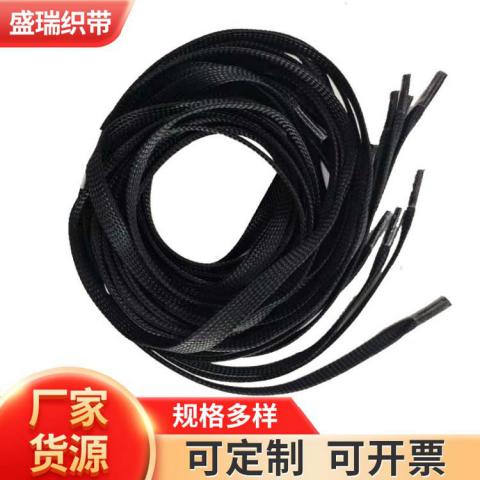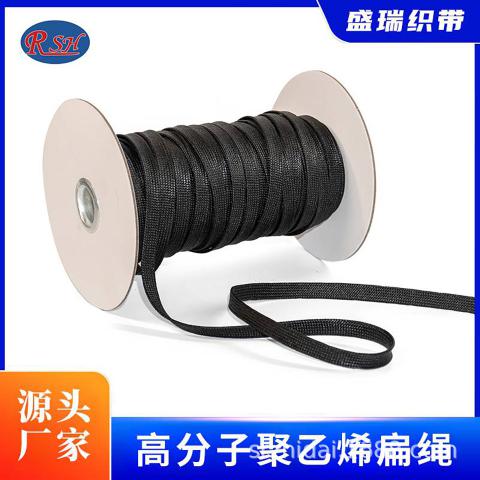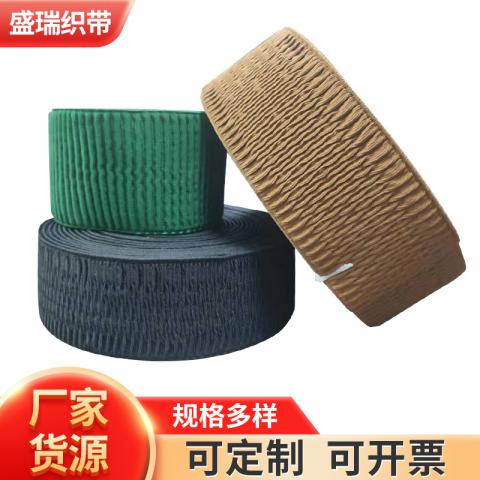
medical supplies
In the field of medical supplies, Shengrui's webbing is used to fix and support medical equipment. The soft cotton webbing is suitable for fixing surgical instruments and provides comfortable support; the breathable polyester webbing is antibacterial and anti - slip, and is suitable for medical bedding. The customized service meets the special needs of medical equipment.
In the medical field, every detail is crucial for the health and safety of patients. The accuracy and stability of medical supplies are of utmost importance. The webbing, a seemingly ordinary material, plays a vital and indispensable role in the fixation and support of medical equipment, providing strong guarantee for the smooth progress of medical work. Today, let's take an in - depth look at the important applications of webbing in medical supplies!
Fixation of Medical Equipment: Ensuring Precision and Facilitating Diagnosis and Treatment
In various departments of the hospital, there is a wide variety of medical equipment. The precise fixation of these devices is decisive for the diagnosis and treatment effect, and the webbing acts as an important "fixation assistant" here.
Take the operating room as an example. The surgical operating lamp is an essential lighting device during the operation. It needs to be accurately fixed at the appropriate position above the operating table to ensure uniform and shadow - free lighting for the surgical area. At this time, high - strength and high - stability webbing comes in handy. By using a special device to connect the webbing with the无影灯 and the ceiling, leveraging the load - bearing capacity and adjustability of the webbing, not only can the shadowless lamp be firmly fixed, but its height, angle and other parameters can also be flexibly adjusted according to the surgical needs, providing the best surgical lighting conditions for doctors and ensuring the smooth progress of the operation.
Looking at the monitors in the ward, they need to be in the right position at all times for medical staff to observe the patients' vital signs data. The fixing straps made of webbing can properly fix the monitor on the railing of the hospital bed, preventing the monitor from shifting due to accidental collisions or shaking, ensuring that the screen can clearly display the data, and the connected wires can be arranged in an orderly manner without getting tangled. This is crucial for medical staff to timely and accurately grasp the changes in the patient's condition.
There are also some portable medical testing devices, such as the Holter monitor. Patients need to carry it with them during daily activities to record long - term electrocardiogram data. This requires the webbing fixing strap to ensure that the device fits properly on the body and does not loosen or shift during walking and activities, making the test data accurate and reliable, providing an accurate basis for subsequent diagnosis by doctors.
Support of Medical Equipment: Providing Stability and Assisting Rehabilitation
In addition to the fixation function, the webbing also makes significant contributions to the support of medical equipment, providing necessary assistance for the patient's rehabilitation process.
For example, in various limb rehabilitation training devices commonly seen in the rehabilitation department, some devices for leg strength recovery will use webbing as part of the support structure. The webbing with certain elasticity and strength can provide appropriate support according to the changes in the force of the patient's leg movement, helping the patient gradually increase muscle strength, while avoiding secondary injuries caused by improper force, and guiding the patient to carry out scientific and safe rehabilitation training.
For some patients who need assistance in standing or walking, special webbing waist belts and leg support belts also play a key role. They are wrapped around the waist and legs. Through reasonable design and adjustment, they share part of the body weight, providing sufficient support for the patient, enabling the patient to take each step with more confidence during rehabilitation exercises and accelerating the rehabilitation process.
Another example is in spinal correction treatment. The correction devices with webbing can fit the curve of the human spine. Using the pulling force of the webbing, the spine is moderately stretched and fixed, helping to correct the abnormal shape of the spine, relieve pain and other discomfort symptoms caused by spinal problems, and promote the normal development and recovery of the spine.
Considerations of Material and Design: Meeting High Medical Standards
When webbing is applied to the field of medical supplies, its material and design have strict requirements, all for the better service of patients' health and medical work.
In terms of material, materials that are non - toxic, odorless, antibacterial, anti - allergic, and have good strength and durability are usually selected to make the webbing. Because it comes into direct contact with the patient's body, if the material is not up to standard, it is likely to cause adverse reactions such as skin allergies, affecting the patient's treatment experience and rehabilitation effect. For example, some webbing with a special medical silicone coating is not only soft and comfortable, but also can effectively inhibit the growth of bacteria, ensuring the safety of use.
From the design perspective, most medical webbing is adjustable to meet the needs of patients with different body types and different conditions. Moreover, the connection parts of the webbing are also carefully designed to ensure firmness and reliability, without the risk of accidental loosening. At the same time, it should be convenient for medical staff to operate, enabling them to quickly adjust the fixation and support state of the webbing according to the actual situation.
The Value and Significance of Webbing in Medicine
The fixation and support functions of webbing in medical supplies, although not as eye - catching as some large - scale medical equipment, are an indispensable part of the entire medical process. It silently ensures the stable operation of medical equipment, helps patients carry out rehabilitation training more smoothly, and makes tangible contributions to improving the quality of medical care and the patient's prognosis.
Precisely because of the precise application of webbing, doctors can focus more on diagnosis and treatment work, relying on stable equipment to obtain accurate data; patients can also receive treatment and rehabilitation exercises in a comfortable and safe environment, reducing the troubles and risks caused by equipment displacement and other problems. It can be said that webbing guards the health of every patient in a unique way in the medical field, becoming a solid "unsung hero" behind medical work.
In conclusion, the application of webbing in medical supplies reflects its professionalism and importance. With the continuous development of medical technology, it is believed that webbing will continue to play a greater role in this field and contribute more to the cause of human health.
Related products
Nylon high elasticity bias rope
Shengrui Webbing provides you with manufacturer recommended products such as nylon high elastic bands, bias ropes, clothing pants, waistbands, hoodies, hat ropes, shoelaces, sportswear, hat drawstrings, etc. Here, numerous suppliers, buyers, and manufacturers gather. To learn more about manufacturer recommendations for nylon high elastic bands, bias ropes, clothing pants waist, hoodies, hat ropes, shoelaces, sportswear, and hat drawstrings, please visit Shengrui Webbing Network!
Nylon flat rope
Shengrui Webbing provides you with manufacturer recommended nylon flat rope, digital handheld rope, water cup rope, and various styles and colors that can be customized. Shengrui Ribbon is a professional ribbon manufacturer.. To learn more about the manufacturer's recommended nylon flat rope, digital handheld rope, water cup rope, and various styles and colors that can be customized, please visit Shengrui Webbing Network!
Weaving UHMWPE ultra-high molecular weight polyethylene flat rope
Shengrui Webbing provides you with products such as woven UHMWPE ultra-high molecular weight polyethylene flat ropes, strong tensile and wear-resistant hanging ropes, etc. Here, numerous suppliers, buyers, and manufacturers gather. For more information on woven UHMWPE ultra-high molecular weight polyethylene flat rope, strong tensile and wear-resistant hanging rope, please visit Shengrui Webbing Network!
Polyester Ripple Wrinkle Elastic Band
Shengrui Webbing provides you with recommended products such as polyester corrugated wrinkles, elastic bands, hats, waistbands, elastic edging, home textiles, and clothing. Shengrui Ribbon is a professional ribbon manufacturer.. For more information on recommended polyester corrugated wrinkle elastic bands, hats, waistbands, elastic edging, and home textile clothing from shopkeepers, please visit Shengrui Webbing Wholesale website!



